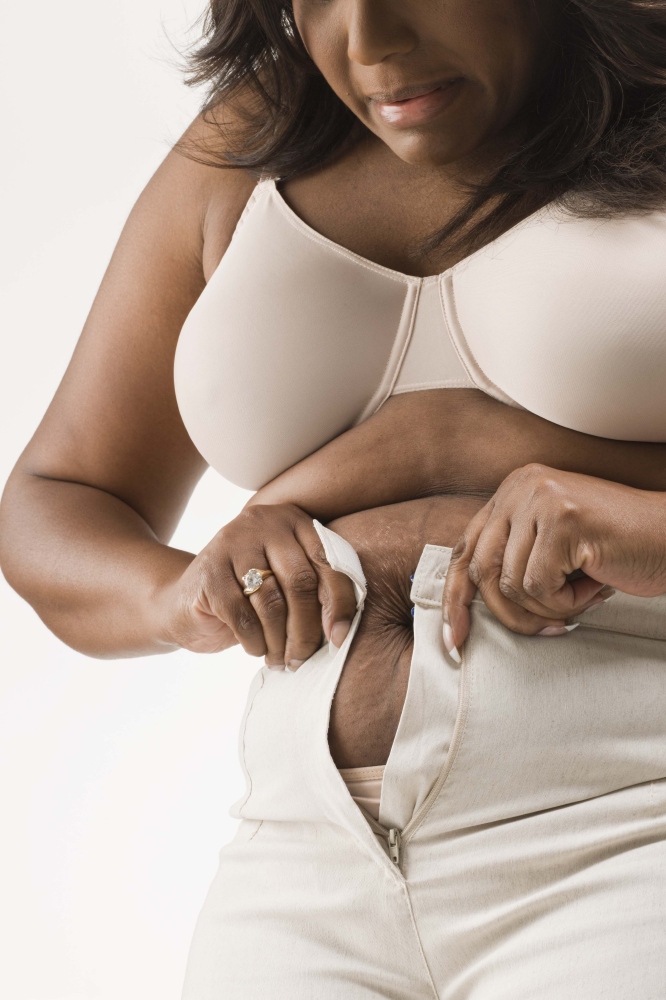
Are you carrying too much fat around the middle?
Women are struggling to pick items up off the floor because their stomach is getting in the way of them, according to new research.
A survey commissioned by the ICCR (International Chair on Cardiometabolic Risk) interviewed 2,000 people in the UK and found that men and women’s waistlines are preventing them from doing everyday tasks.
The research has also found that one in ten women also found their stomach got in the way of them tying the laces on their shoes.
But it would seem that there is an easy answer to this as a third of women admit to never exercising despite the government recommending that we should do 150 minutes of moderate to vigorous intensity physical activity a week.
Abdominal obesity is a growing concern, “fat stored around the waist is more dangerous than fat stored elsewhere in the body,” explains Jean-Pierre Després, Scientific Director of the ICCR.
“If you carry too much fat around your waist, you are putting yourself at risk of contracting dangerous health conditions like coronary heart disease, type 2 diabetes and stroke. By making a few simple lifestyle changes, like exercising for 30 minutes a day, drinking water instead of fizzy drinks and maintaining a healthy diet, you can reduce the size of your waistline and reduce the threat to good health.”
Modern diets and lack of exercise have contributed to a global epidemic of diseases related to abdominal obesity, so it’s time we make a change.
Professor David Haslam, Chair of the National Obesity Forum, says: “It’s important that people realise that even if you have a ‘healthy’ BMI, you can still be abdominally obese. Being abdominally obese can be a serious threat to your health. This research shows that people’s daily lives are being hampered by having too much fat stored around the waistline. Small changes to the diet, such as reducing sugar and salt consumption and drinking more water, along with being active will reduce your waistline.”
How do I know if I’m abdominally obese?
- You can still be abdominally obese even if you have a normal BMI
- Your waist circumference can indicate whether you are too fat in your abdominal cavity and in vital organs such as your heart, liver and muscles
- Don’t just rely on the weighing scales; look at your body in the mirror and consider if you carry excess weight around your waist
- Measure your waist with a tape measure. If it is bigger than the recommended level (94 cm for men and 80 cm for women) then you should take steps to reduce it
- You are more at risk if you are apple shaped rather than pear shaped
How can I reduce the fat around my tummy?
- Make simple lifestyle changes such as walking daily, making small alterations to your eating habits such as eating in moderation processed foods rich in fat and sugar and replace sugary drinks for water
- It’s very hard to change your diet overnight. Progressively cutting the calories contained in what you drink by switching to water is a great and simple way to reduce your intake of useless calories. Furthermore, you may gradually retrain your taste-buds – for example to become used to less sugar
- Being physically active for at least 30 mins per day is a great way to reduce the risk of type 2 diabetes and heart disease associated with abdominal obesity.
How do I measure my waist properly?
- Find the half-way point between the bottom of your ribs and your hip bone
- This is where you should wrap the tape measure around you to give an accurate waist measurement
- Measure your waist with a tape measure. If it is bigger than the recommended level (94 cm for men and 80 cm for women) then you should take steps to reduce it
Femalefirst Taryn Davies
Tagged in Obesity

